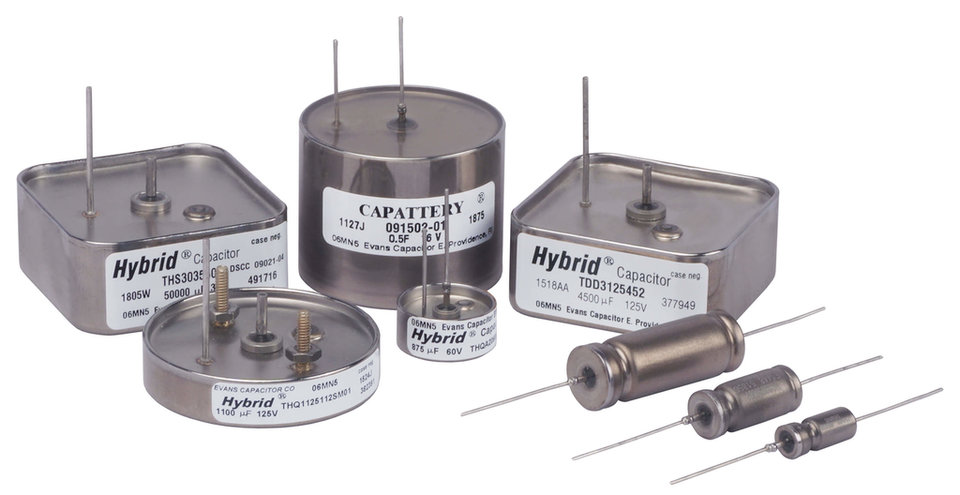What are EVANSCAPS?
EVANSCAPS are hybrid wet tantalum capacitors that provide significant savings of space, weight, power, and cooling requirements compared to other capacitor technologies.
EVANSCAPS’ operating principal lies within the combination of two capacitor technologies; tantalum and ruthenium oxide. Ruthenium oxide has enormous capacitive characteristics, but by itself it cannot be operated at a usable voltage, therefore it has limited real world applications.
Dave Evans, Inventor and President of Evans Capacitor Company, found that combining ruthenium oxide in series with tantalum allowed much higher voltages to be achieved while still benefiting from the high capacitive characteristics of ruthenium oxide. The unique chemistry and construction of EVANSCAPS make it the most power dense capacitor in the industry.

Who makes EVANSCAPS?
EVANSCAPS are designed and manufactured by Evans Capacitor Company, headquartered in East Providence, RI. Evans Capacitor Company is a privately held AS9100/ISO 9001 certified small business founded in 1996. In 2018, Evans Capacitor Company was selected by the US Small Business Administration as the National Subcontractor of the year.
What makes EVANSCAPS so unique?
EVANSCAPS are smaller and lighter than other capacitor technologies such as tantalum and aluminum electrolytic. In fact, they are the most power dense capacitors in the Industry.
EVANSCAPS are come in a rugged, hermetically sealed, tantalum case and have an unlimited shelf life. Its robust design allows for extreme duty cycles and it can withstand high current, high temperature, and high shock and vibration environments.
Every EVANSCAP that is built undergoes over 48 hours of extensive testing which has given it its unmatched reputation for quality and reliability. EVANSCAPS’ design has been proven in over 20 years of field service and numerous customer application qualification tests for use in Military and Aerospace Systems.
How do EVANSCAPS compare to other capacitor technologies?
Traditional capacitor technologies such as tantalum and aluminum electrolytic have been used for decades in a wide range of applications. While these trusted and proven technologies continue to be used today, they have electrical, environmental, and physical limitations. EVANSCAPS offer an advanced solution to applications where achieving high performance while minimizing space and weight are critical considerations.
EVANSCAPS are 1/10 the size of traditional tantalum capacitors and 1/4 the size of the industry’s leading aluminum electrolytic capacitor. In addition, EVANSCAPS provide improved electrical characteristics such as lower ESR and inductance, and high current ratings compared to other capacitor technologies.
Where are EVANSCAPS in use today?
EVANSCAPS are primarily used in defense, aerospace, and downhole drilling applications. They can be found on the International Space Station, the Arrowhead system in the Apache Helicopter, the F-35 Joint Strikefighter combat aircraft, the LLDR Target designator laser system, and advanced phased array radar system on the E 2D Hawkeye, to name a few.
EVANSCAPS are qualified and in service with ALL US Tier 1 aerospace and defense contractors and the industry’s leading oilfield service companies. Typical applications include radar (T/R module), pulsed laser, power hold-up/bridge power (MIL-STD 704 / DO-160), directed energy, space applications (qualified to NASA INST-002), electronic warfare, and many more.
get in touch!
Evans Capacitor Company
72 Boyd Ave, East Providence RI 02914
(401) 435-3555
(401) 435-3558 fax
www.evanscap.com
Go to top
